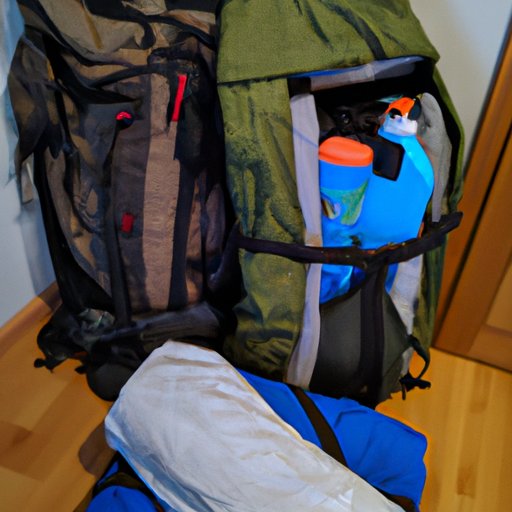Introduction
Svalbard is a Norwegian archipelago located in the Arctic Ocean. It’s known for its remote wilderness, rugged terrain, glaciers and tundra. The archipelago is home to some of the world’s northernmost settlements and is a popular destination for adventure seekers and nature lovers alike. In this article, we’ll cover tips and advice for planning a trip to Svalbard and making the most of your experience.
Research the Best Time to Visit Svalbard
The ideal time to travel to Svalbard depends on what activities you plan to do while visiting. Summer is the best time to visit if you’re looking to take part in outdoor activities such as hiking, kayaking, or dog sledding. The days are long and temperatures are comfortable with average highs in the mid-50s Fahrenheit. Winter is also a great time to visit if you’re looking for a unique experience. Temperatures can drop as low as -22°F, so it’s important to be prepared with the right clothing and gear.
When researching the best time to visit Svalbard, consider the types of attractions that interest you. Popular tourist attractions include the Svalbard Museum, the Global Seed Vault, and the Polar Bear Safari. Some attractions may only be available during certain months, so make sure to check availability before booking your trip.
Cost of travel is another important factor to consider when deciding when to visit Svalbard. Prices tend to be higher during peak season, which is typically between late May and early August. If you’re looking to save money, consider traveling during the off-season when prices are lower.
Look Into Travel Options
There are several ways to get to Svalbard. The most common way is by plane. There are daily flights from Tromsø, Norway and Longyearbyen, the main settlement on the island. Flights from other cities may require a connection in either Tromsø or Longyearbyen. Make sure to book your flight well in advance to get the best rates.
If you’d prefer to arrive by sea, there are several cruise ships that offer trips to Svalbard. These trips usually last anywhere from 7-14 days and provide an opportunity to explore the islands and experience the wildlife. Keep in mind that these trips can be expensive and are typically only available during the summer months.
Secure a Visa and/or Necessary Permits
Visiting Svalbard requires a valid passport. Depending on your nationality, you may also need to obtain a visa. Citizens of EU countries, the US, Canada, and other select countries can enter Svalbard without a visa. For citizens of other countries, a visa may be required. Make sure to research the visa requirements for your country of origin before booking your trip.
In addition to a visa, you may also need to obtain permits to visit certain areas of Svalbard. For example, visitors must obtain a permit to visit Nordaustlandet Nature Reserve. There are also restrictions on entering certain areas due to safety concerns related to polar bears. Make sure to familiarize yourself with local laws and regulations before traveling.

Pack Appropriately for Climate and Conditions
When packing for a trip to Svalbard, it’s important to keep the climate and conditions in mind. The weather can be unpredictable, so it’s best to bring a variety of clothing items that can be layered. Bring a waterproof jacket and pants as well as insulated boots and gloves. Pack warm hats and scarves to protect against the wind. Sunscreen and sunglasses are also essential to protect against the sun’s rays.
In addition to clothing, it’s important to bring the right gear and supplies. A first aid kit, flashlight, and multi-tool are all essential items. A map and compass will come in handy for navigating the terrain. It’s also important to bring enough food and water for your entire trip, as well as a means to purify water.

Familiarize Yourself with Local Rules and Regulations
Before traveling to Svalbard, it’s important to familiarize yourself with the local laws and regulations. For example, visitors must abide by the “Leave No Trace” policy, which prohibits leaving behind any waste or debris. It is also important to respect wildlife and stay at least 50 meters away from polar bears. Hunting and fishing are strictly prohibited.
It’s also important to be aware of safety precautions. The weather can change quickly, so make sure to check the forecast before heading out. It’s also a good idea to let someone know where you’re going and when you plan to return. Cell phone coverage is limited, so a satellite phone or radio may be necessary in case of an emergency.
Create an Emergency Plan
No matter how well you prepare, it’s important to have a plan in place in case of an emergency. Make sure to research the resources available in case of an emergency, such as hospitals and evacuation services. It’s also important to purchase travel insurance to cover medical costs, lost luggage, and other potential expenses.
Conclusion
Traveling to Svalbard can be an unforgettable experience, but it’s important to do your research and be prepared. Make sure to research the best time to visit, look into travel options, secure a visa and/or necessary permits, pack appropriately for the climate and conditions, familiarize yourself with local rules and regulations, and create an emergency plan. With the right preparation, your trip to Svalbard can be an adventure of a lifetime.
(Note: Is this article not meeting your expectations? Do you have knowledge or insights to share? Unlock new opportunities and expand your reach by joining our authors team. Click Registration to join us and share your expertise with our readers.)
